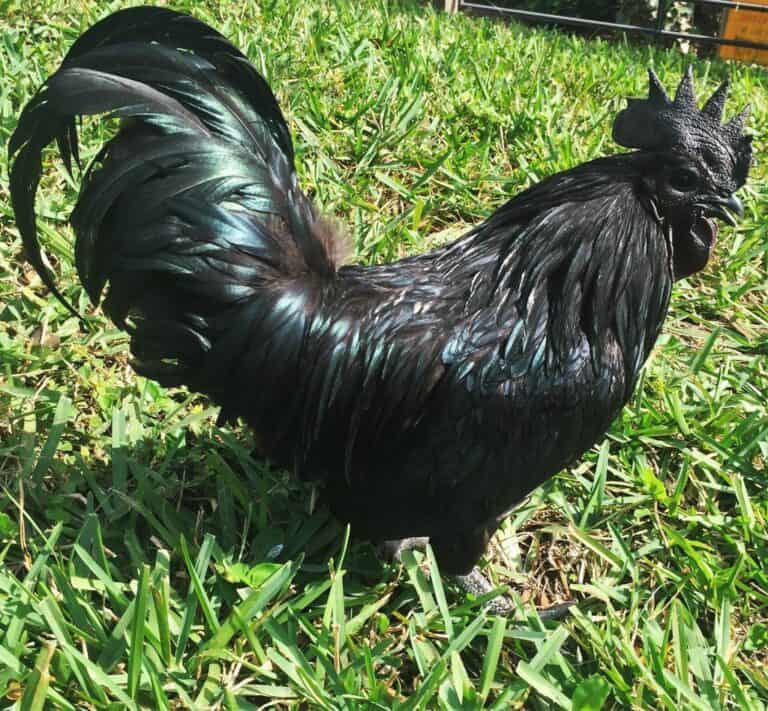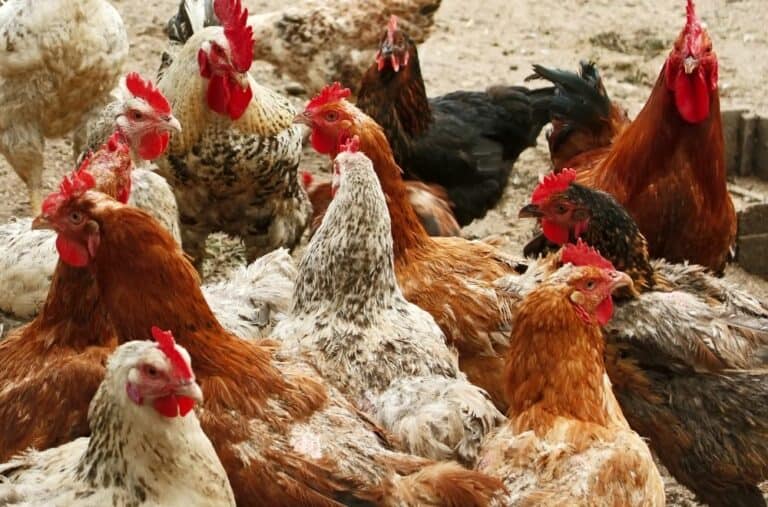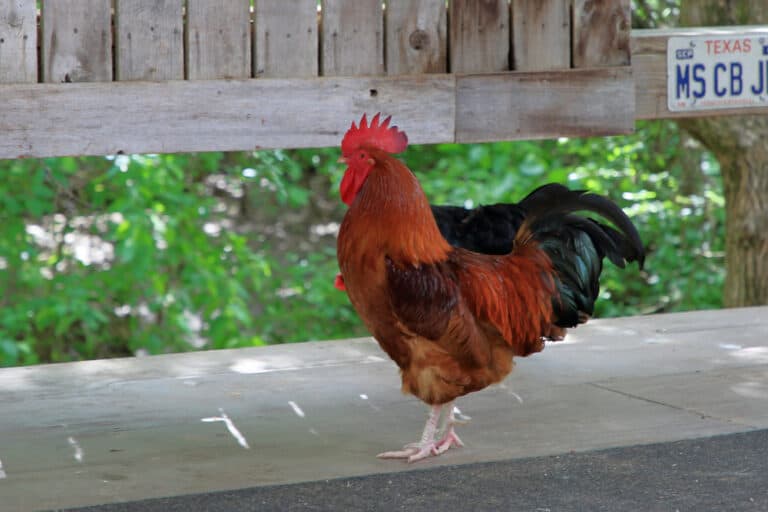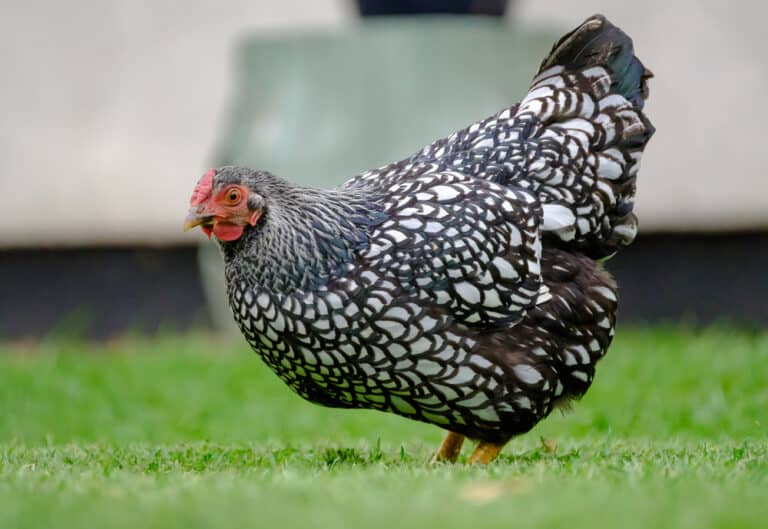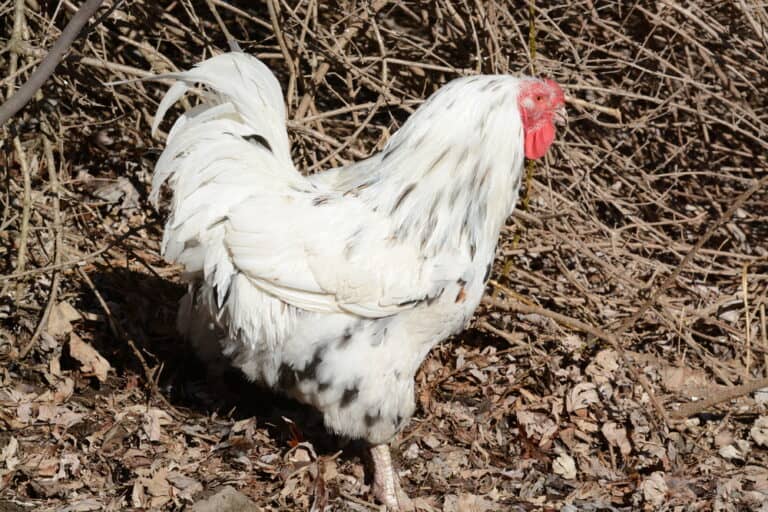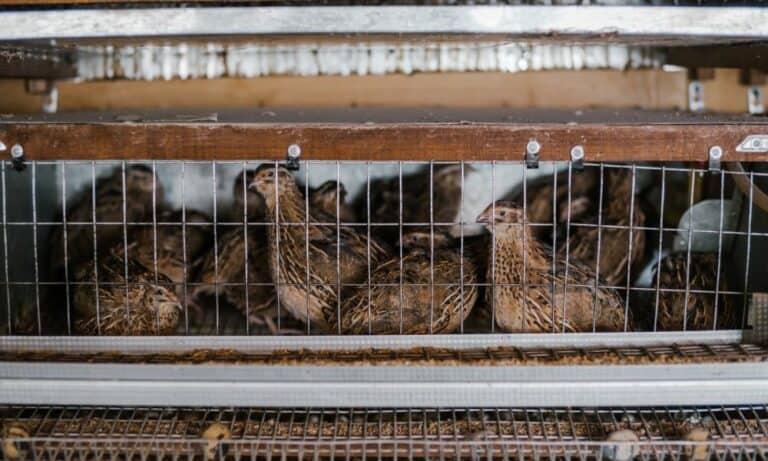Raising chickens for meat is a great idea, especially if you have a spacious homestead to keep and nurture them. However, not all chicken breeds are ideal for meat production. You’ll find that while some species are great for meat production, others are better suited for egg production, while few serve a dual purpose, producing a decent amount of meat and egg.
Meat chicken breeds have peculiar qualities that make them desirable for meat production. These birds have a faster growth rate and appear bigger than other breeds because of their higher meat percentage. Also, they efficiently convert feed to meat and require little resources to produce equal amounts of meat compared to other meat-producing animals like pigs and goats.
In this post, we’ll explore the top 10 meat chicken breeds, comparing them based on growth rate, average weight, and meat quality.
Characteristics of Meat Chicken Breeds
You can identify meat chicken breeds with specific attributes not typically found in egg-producing and dual-purpose breeds. Here are some of them:
1. They grow incredibly fast
When provided with the proper nutrients and other conditions for growth, meat chicken breeds grow to adult size in record time. On average, a good number tends to reach maturity within nine to twelve weeks, unlike egg-laying breeds that may need 15 to 22 weeks.
2. They are typically large, with meaty chests and thighs
An average meat chicken breed weighs about 5 pounds. However, some, like the Jersey Giant, weigh up to 11 pounds. Some may grow very large to the point where their feet struggle to support their heavy weight; hence won’t move around much.
3. They have a high meat yield
They essentially deliver what they’re raised for to produce meat. These birds have a higher muscle proportion and appear fleshier when compared to other breeds.
4. They are generally docile birds
Their calm nature makes them relatively easier to raise and manage than others. Also, because these birds are quiet, you can comfortably raise them in your backyard without worrying about disturbing the environment’s peace.
5. They are more prone to diseases and other health issues
For example, because of how large they grow, they may suffer joint problems that occur mostly on their legs. Likewise, some develop respiratory issues and weakened immune responses.
Therefore, if meat chicken breeds are to grow as expected, you must pay extra attention to their health and immediately administer treatment once you catch sight of early disease symptoms.
6. They don’t live long
Their short lifespan is because they are usually slaughtered once they reach maturity. However, if you decide to keep one past the average 9-week maturity period, it may live for up to 4 to 8 years as long as it isn’t ridden with disease.
Because their purpose is for production, you’ll be interested in knowing that keeping meat chicken breeds alive for years is not ideal because longevity may affect their meat quality.
10 Best Chicken Breeds for Meat Production
As promised, here are ten chicken meat breeds we recommend you consider when raising chickens for meat.
1. Cornish Cross
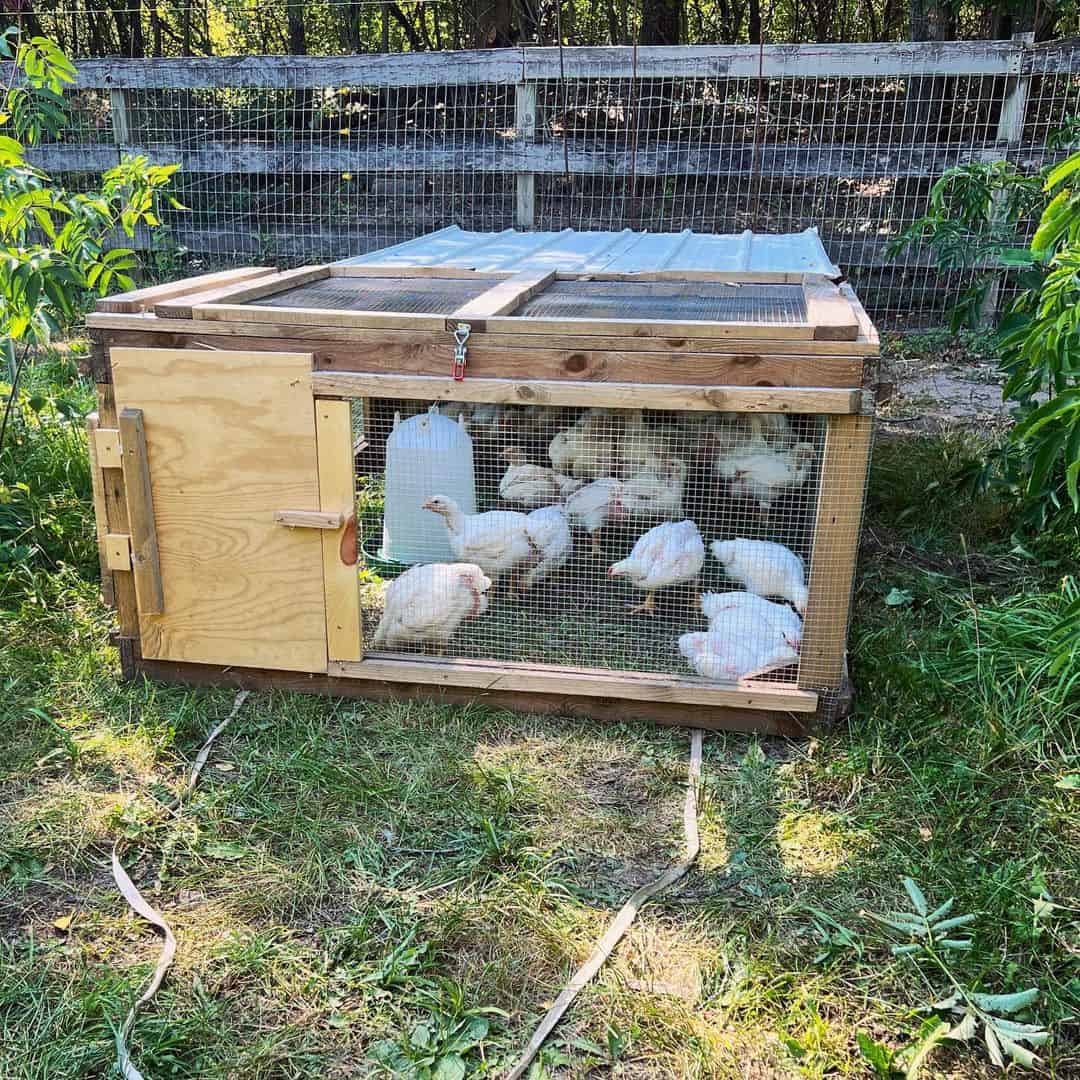
The Cornish Cross is a popular meat chicken breed that makes up most of the packaged meat sold in grocery stores. These hybrid broiler chickens result from crossing white Plymouth rock and Cornish breeds.
While they are great for meat production, they don’t do well in egg-laying and are poor breeders due to how big they get when they clock sexual maturity. So if you plan on raising them continuously, you’ll need to purchase new chicks as frequently as you choose.
Also, we advise raising them in enclosed spaces because their large sizes tend to make them slow on their feet; hence they can’t evade predators if raised as free-range birds.
In addition to this, their large size also has serious implications on their health, giving rise to multiple health issues that may lead to death.
One other thing to note is Cornish Cross breeds are not hardy birds and need a great deal of attention and care, especially with their health. They don’t do well in extremely hot environments, and although they reach maturity quite fast, they consume more feed than an average poultry bird, so keep in mind that raising them in your backyard may require a lot more resources. They do however produce good quality meat with high protein content.
Maturity age: 8 – 12 weeks
Average weight at maturity: 8 – 12 lbs
Pros
- High meat production
- The meat produced is of good quality
- Profitable
Cons
- Multiple health issues
- Consumes much feed
- Poor reproduction
2. Jersey Giant
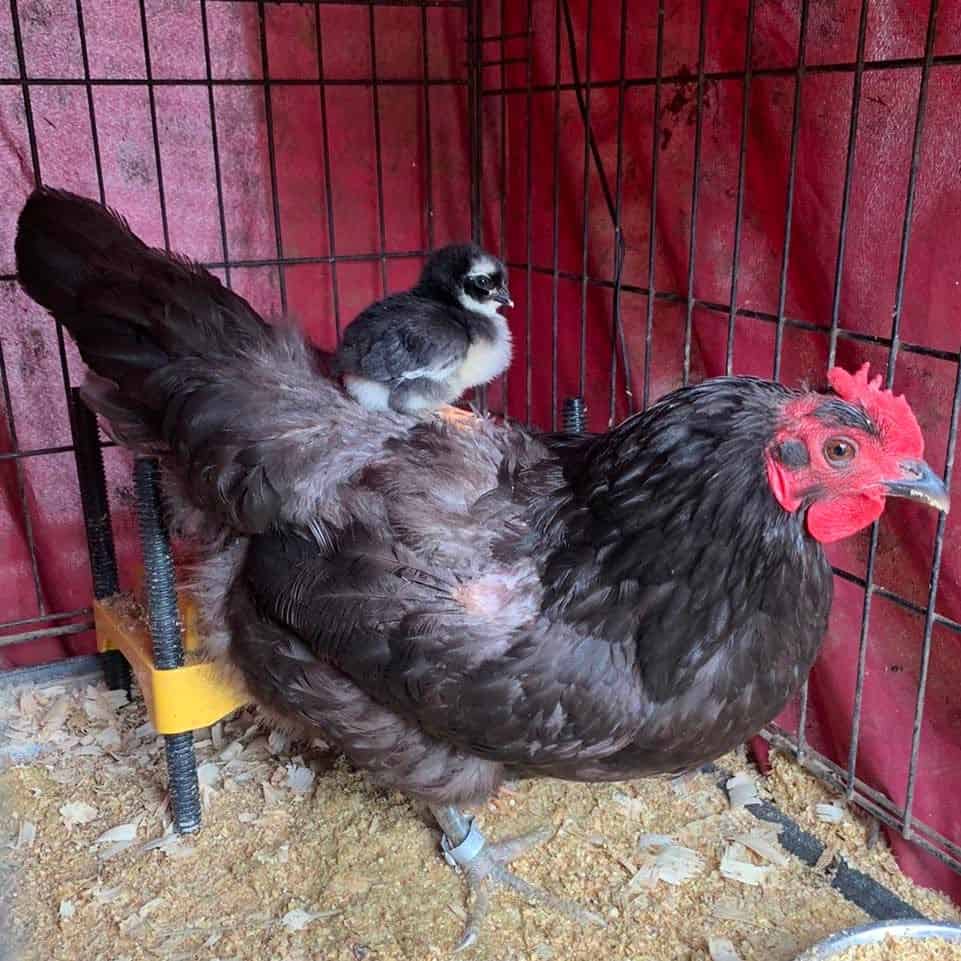
As its name implies, the Jersey Giant is a heritage breed known for its considerably large size. Originally, poultry owners bred this chicken to replace turkeys eventually, but unfortunately, it didn’t turn out as planned. However, that doesn’t mean these birds aren’t any good.
In fact, they’re very sustainable due to their healthy and hardy qualities. You can choose to raise them as free-range birds or in enclosed spaces. Either way, they’ll thrive.
Another interesting fact is that besides being excellent meat producers, they’re pretty decent egg layers. An average Jersey Giant hen lays about 140 to 200 eggs every year.
When it comes to temperament, the hens are fairly docile, but the roosters tend to be a bit more aggressive; however, that shouldn’t stop you from adding them to your flock.
Also, they take longer to reach maturity compared to breeds like the Cornish Cross, but their heavy meat production makes it worth it.
The American Poultry Association recognizes the Jersey Giant in three colors: black, blue, and white.
Maturity age: 16 – 22 weeks
Average weight at maturity: 10 – 14 lbs
Pros
- Stronger and less prone to diseases
- Grow to a very large size
- Sustainable breed
Cons
- Consumes a lot of feed
- Relatively slower growth rate
- Roosters display aggression
3. Dorking
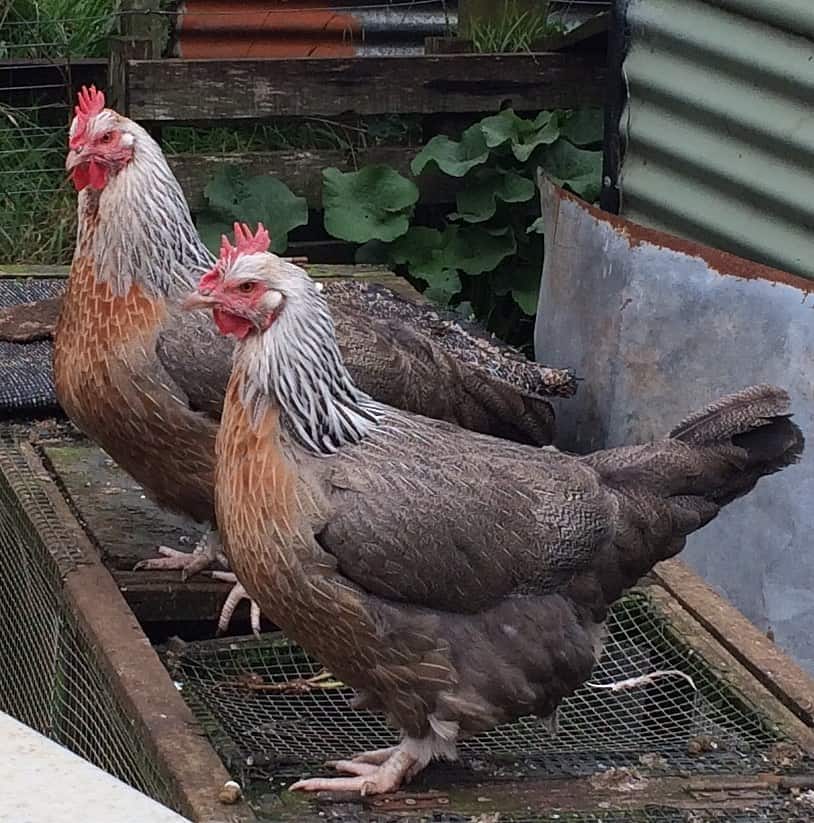
The Dorking is a five-toed chicken breed known for its excellent meat production. They are gentle birds that are hardy enough for pasture raising. One great thing about this breed is that they’re good foragers and require relatively less feed to grow into maturity.
Their docile nature may make them a target for aggressive breeds. But if you must raise them with other breeds, we advise you to place them among a flock of docile ones.
Dorking meat is delicious and tender, which many chicken meat lovers enjoy. Many compare their meat flavor to that of breeds like the Bresse. They’re also excellent egg producers, laying an average of 130 eggs yearly.
Although they are quite hardy, they are known to not thrive in cold weather conditions. Raising them will require more attention during the winter, so don’t develop health issues.
Maturity age: 15-18 weeks
Average weight at maturity: 7-9 lbs
Pros
- Dual purpose birds
- Excellent forages
- Quality meat
Cons
- Endangered specie due to over-commercialization
- Inbreeding systems are not favorable for their growth
4. Freedom Rangers
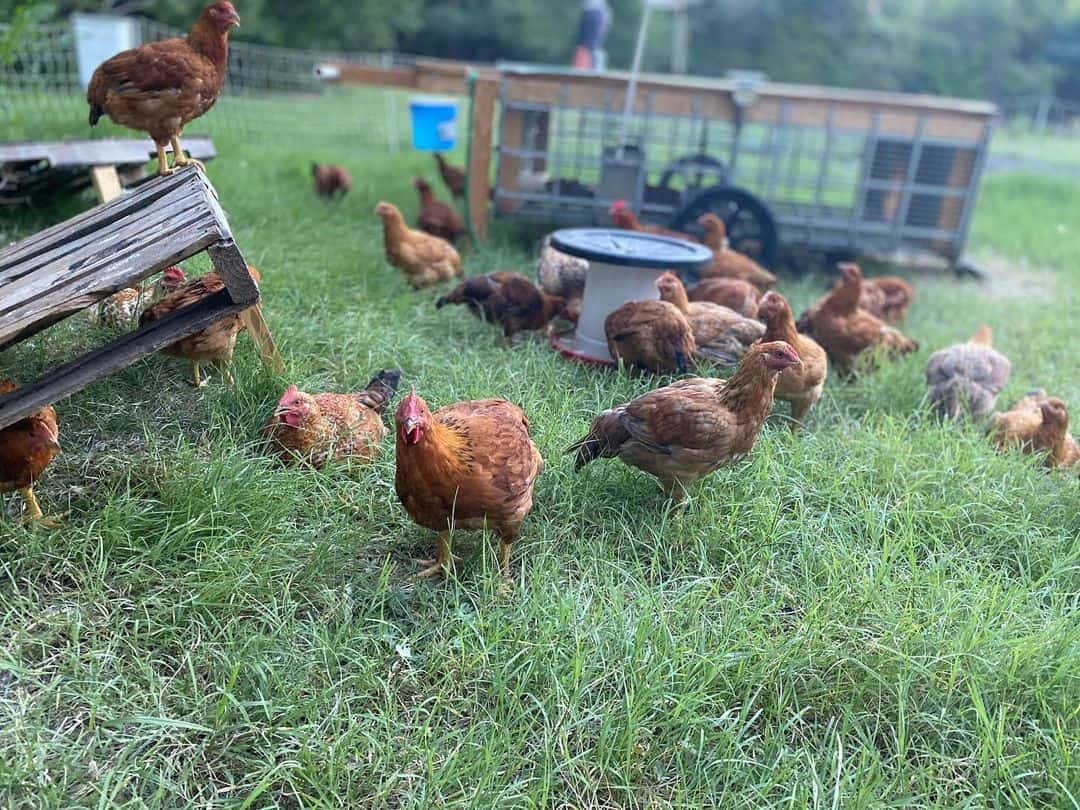
Freedom Rangers are a hybrid breed much like the Cornish crosses but better in that they are much hardy and less prone to health issues. They are decent foragers and don’t necessarily need expensive high-protein feed to flourish. You can find them in varieties such as red, bronze, spotted black and gray colors.
Although Free Rangers produce meat many consider delicious and tender, they grow slower and are smaller than most other meat chicken breeds, thus producing less meat. However, their docile and friendly nature and ability to take care of themselves to an extent make them easier to manage.
Maturity age: 10 – 14 weeks
Average weight at maturity: 4 – 7 lbs
Pros
- Decent foragers
- Produce quality meat
- Easy to manage
Cons
- Not sustainable due to their hybrid nature
- Smaller in size
5. Turkens
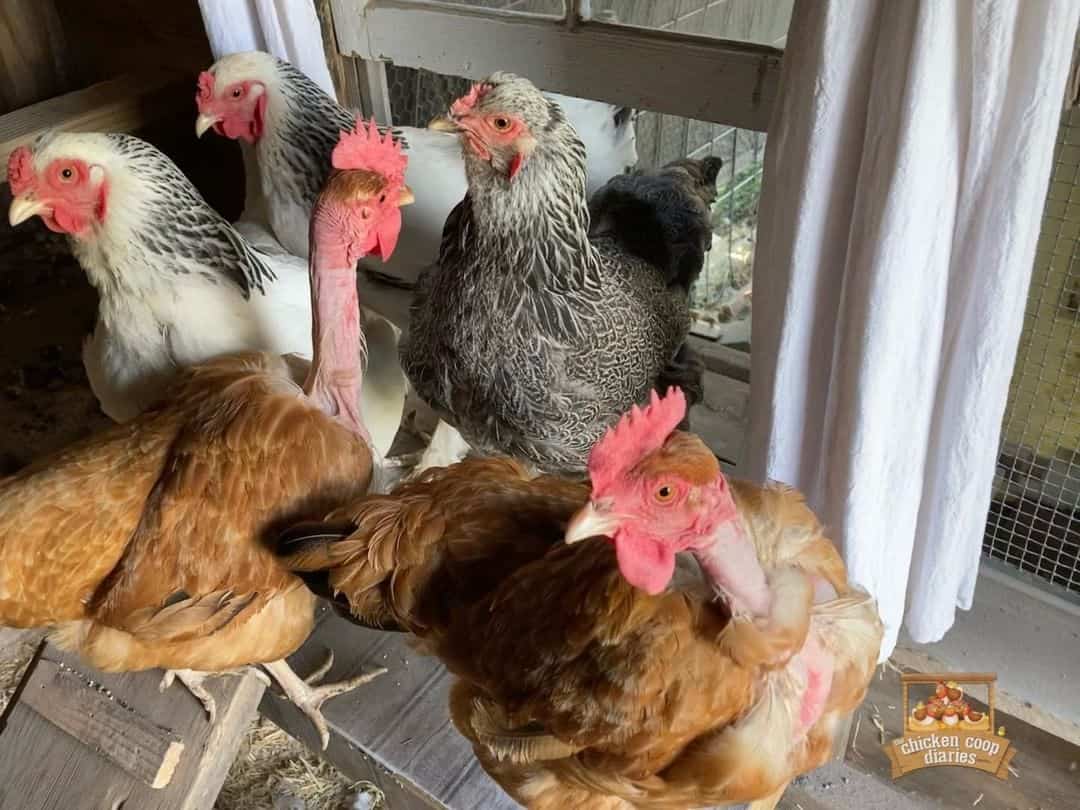
Popularly known for their bare necks, Turkens, also called Naked Necks, are chicken breeds that produce tasty meat and lay large brown eggs compared to other decent egg-laying breeds. Many often mistake this pure chicken breed as a cross between a turkey and a chicken because of the lack of feathers on their necks. However, that’s not the case.
Despite their exposed necks, they adapt easily to cold climates, thriving even in harsh winter seasons.
However, you should regularly inspect their combs during freezing periods as they tend to develop frostbite. Turkens also do well in hot temperatures, allowing them to live and grow almost anywhere in the world.
Maturity age: 15 – 19 weeks
Average weight at maturity: 5 – 9 lbs
Pros
- Fewer feathers make plucking easier
- They serve a dual purpose
- Extreme weather tolerant
Cons
- Not visually appealing
- Take a bit longer to reach maturity
- They Do not raise their young
6. Kosher King
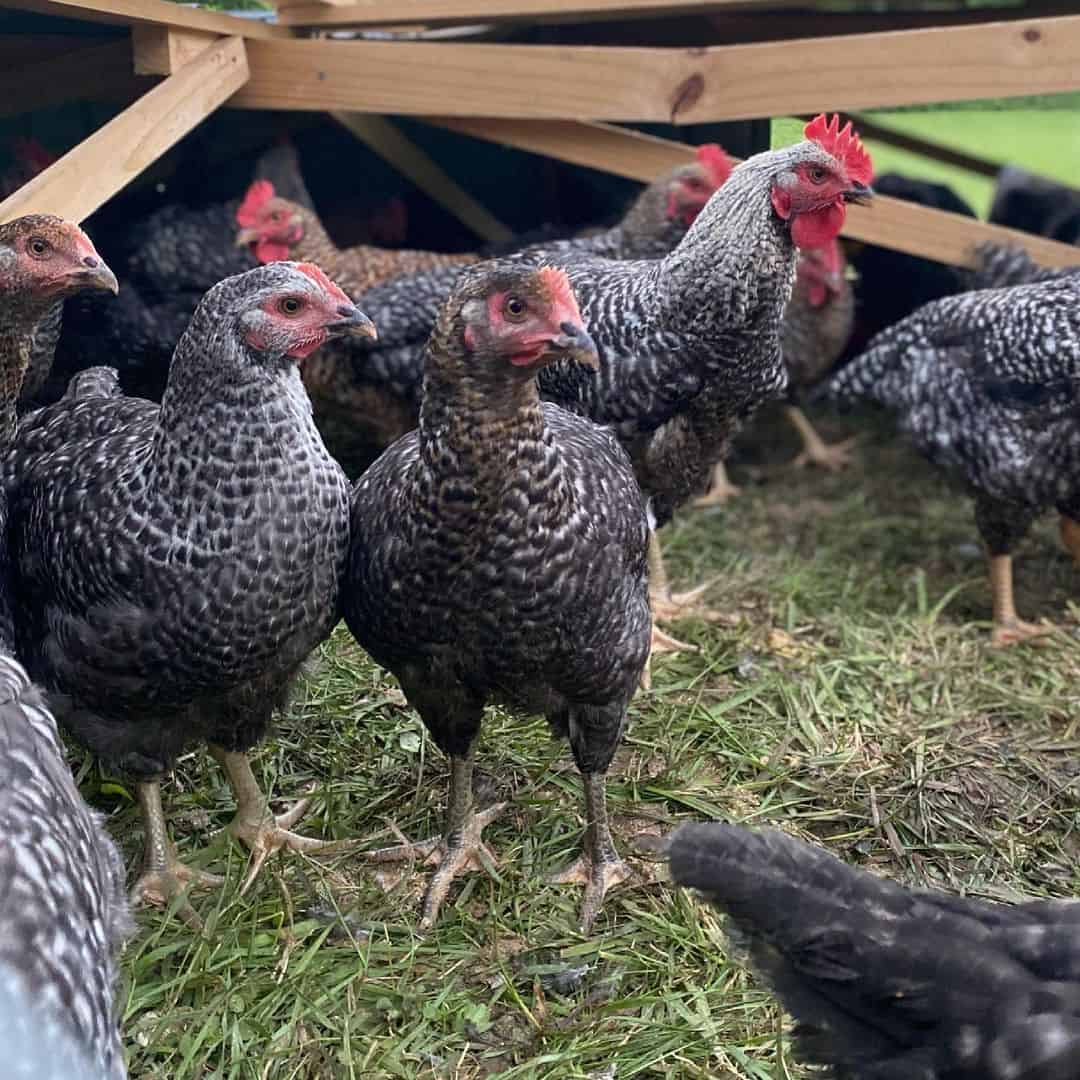
The kosher king is a hybrid breed that originates from crossing several heritage breeds, including Sussex and Barred Rocks. Much like the cornish cross, this meat chicken breed grows fast but has a more natural growth. They produce delicious meat that is perfect for fried and grilled delicacies.
Unlike most meat chicken breeds, Kosher Kings are active and energetic birds. They’re excellent foragers with impressively heightened curiosity and would rather be placed in an open pasture than a confined space.
If you choose to raise kosher kings in your backyard, consider setting up fences and boundaries to prevent them from exploring unfamiliar territories in search of food.
Maturity age: 10 – 14 weeks
Average weight at maturity: 6 – 8 lbs
Pros
- Excellent foragers
- Quality meat
- Easy to raise
Cons
- May encounter danger due to their exploring nature
- Poor reproduction
7. Brahma
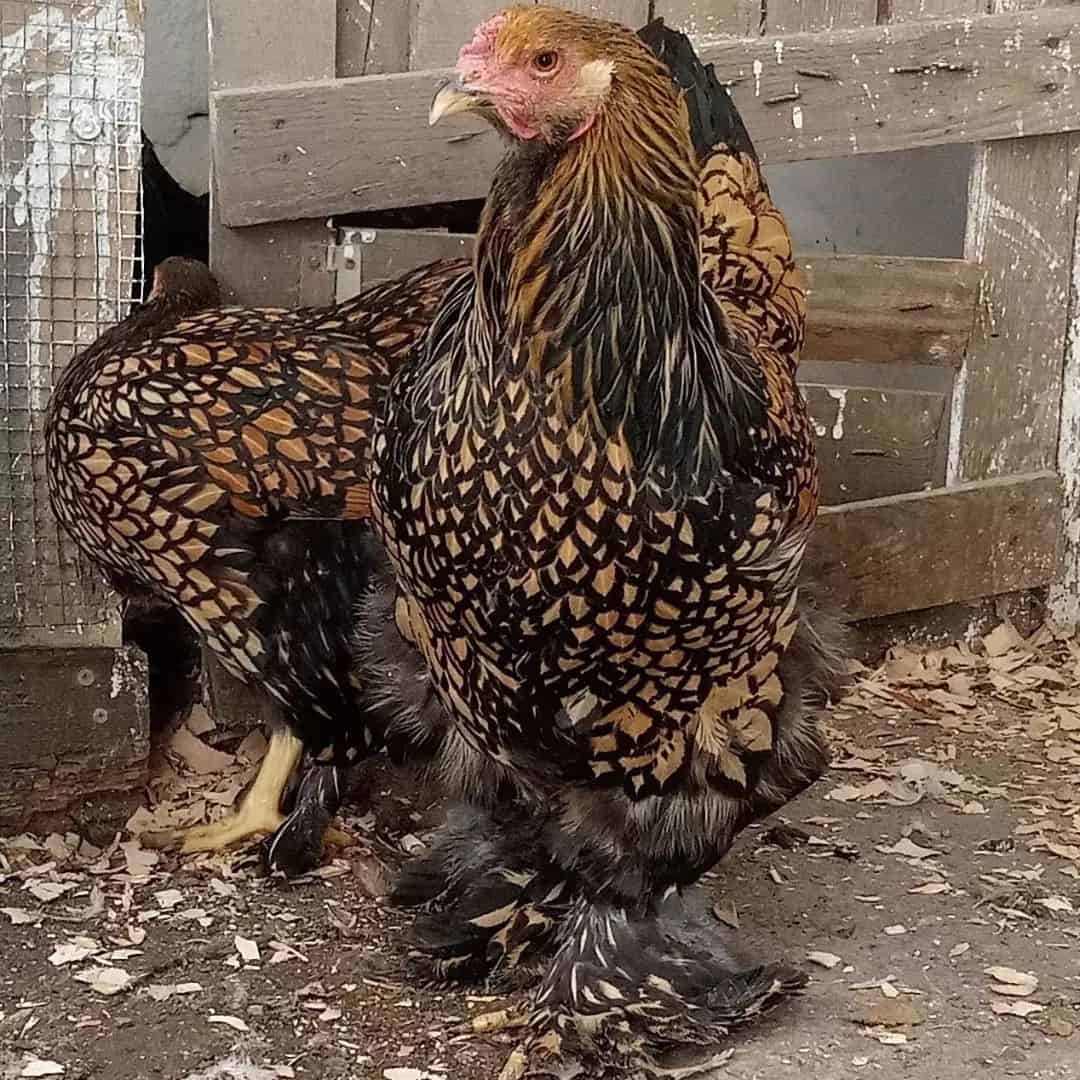
When it comes to size, Brahma chickens are among the largest meat chicken breeds. They’re characterized by their feathered feet and are excellent meat producers, which can be slaughtered as small broilers before reaching maturity. However, it is better to leave them to grow into adulthood as that is when their meat is at its best quality.
In addition, they are pretty decent egg layers, particularly during winter. Brahmas are generally docile birds, but some roosters may exhibit aggressive behaviors. They do well in cold weather, but you must constantly monitor their feet for frostbite. Interestingly, they are forage birds, but if you’d rather confine them, they will grow well on an only-feed diet.
Maturity age: 17 – 22 weeks
Average weight at maturity: 9 – 13 lbs
Pros
- Quality meat producers
- Cold weather tolerant
- Decent foragers
Cons
- Take a while to reach maturity
- They Consume a lot of feed
8. Delaware
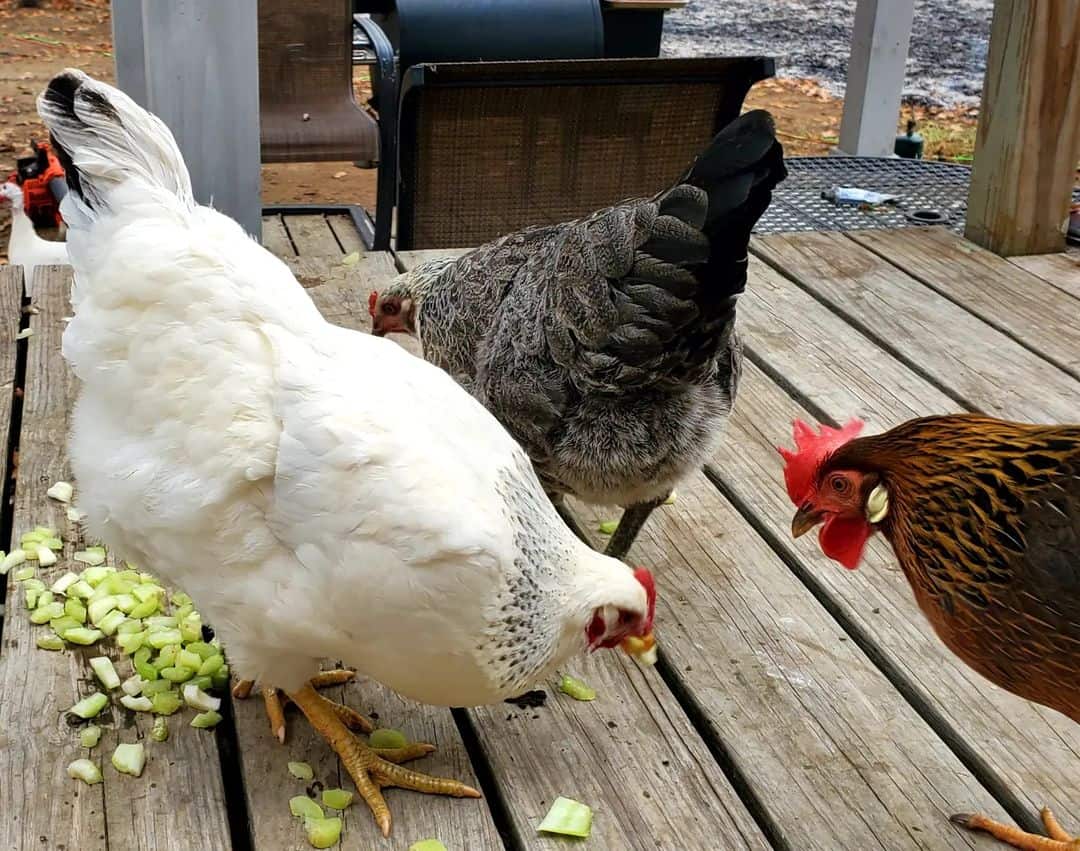
Delawares are heritage birds from crossing New Hampshire and Barred Plymouth Rock breeds. They are dual-purpose breeds, producing good meat and an average of 95 to 140 eggs yearly. Their fast growth rate and hardy qualities make them preferred by meat chicken raisers. Also, they’re forage birds, preferring to hunt for a good part of their meal.
Although not entirely docile birds, Delawares are quite friendly and don’t mind being around humans. They make good backyard chickens but remember that although they’re not noisy, they’re not among the quietest meat chicken breeds and may cause some disturbance if you have neighbors.
Maturity age: 12 – 18 weeks
Average weight at maturity: 6 – 9 pounds
Pros
- Dual-purpose breed
- Friendly temperament
- Easy to raise
Cons
- Do not brood their eggs
- Not the most productive meat bird
9. Bresse
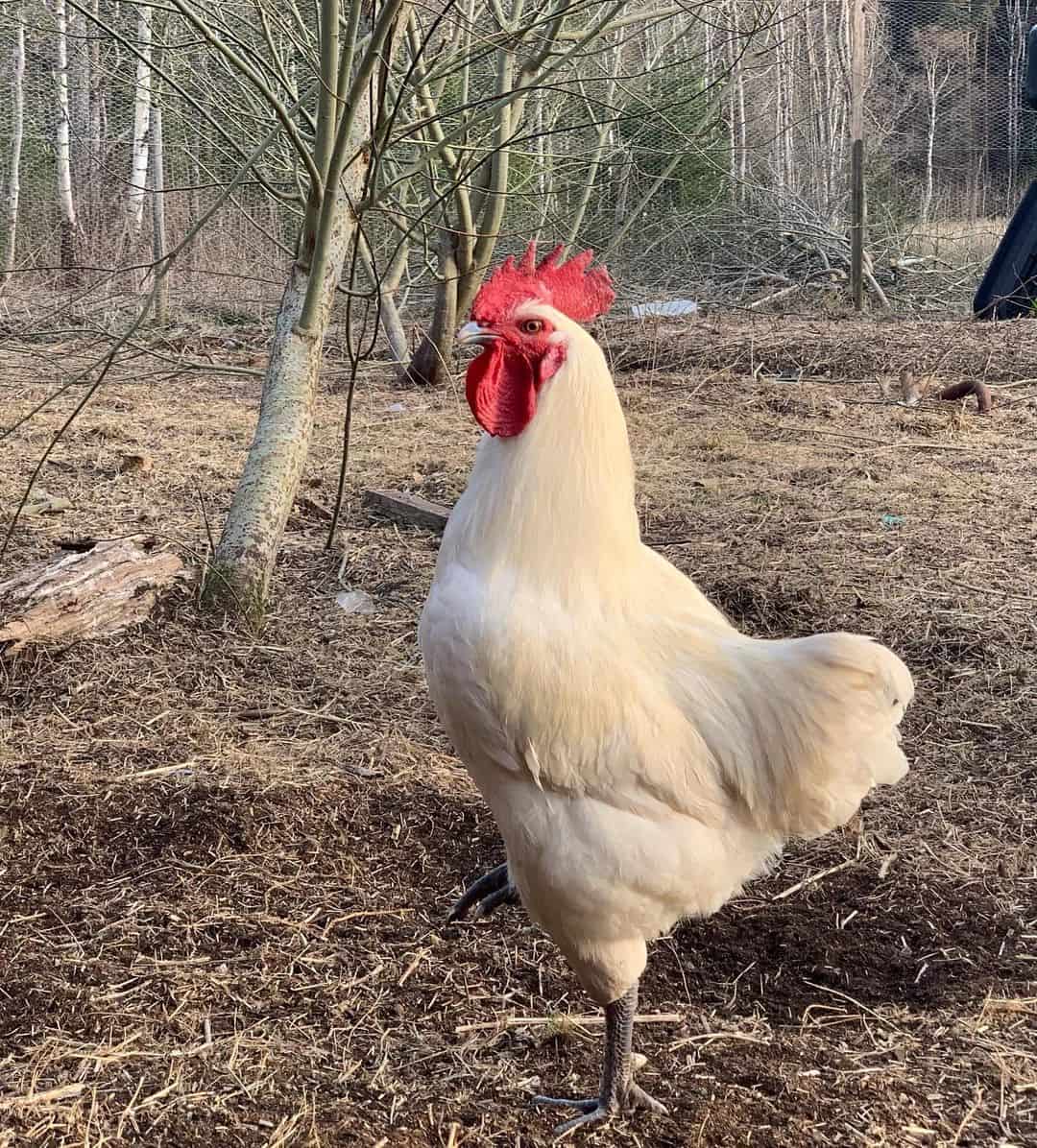
While some breeds are popular for how commercialized they are, others, like the Bresse, are well-known for their incredibly delicious taste. Although very expensive, many would choose this breed because of its flavorful and juicy meat. Remarkably, they’re also decent egg layers, laying an average of three eggs weekly.
Bresse chickens are generally social birds and don’t mind being among a large flock. However, they don’t particularly enjoy human company but aren’t likely to show any aggression when you handle them. They also love foraging and would rather be in an open field with the rest of their flock hunting for worms and creepers.
Although Bresse chickens are originally from France, many in the United States are American breeds.
Maturity age: 14 – 18 weeks
Average weight at maturity: 4 – 7 lbs
Pros
- Quality and flavored meat
- Hardy birds
- Heat and cold tolerant
Cons
- High purchase cost
- Do not grow very large
10. Orpington
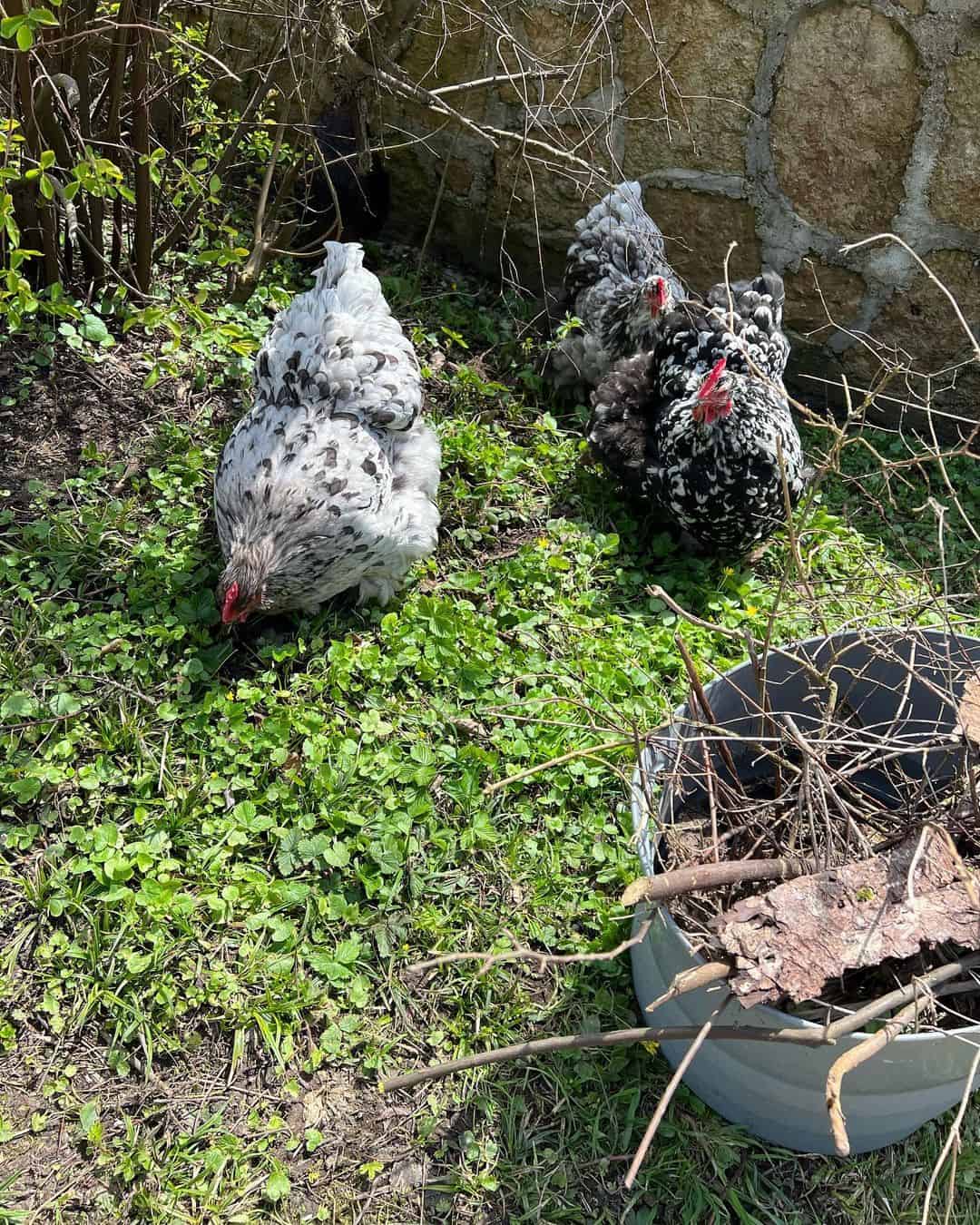
Orpingtons are dual-purpose birds that grow impressively large, making some confuse them for broilers. They lay an average of 180 eggs a year and produce tender and delicious meat many chicken meat lovers enjoy. In addition, they are large docile birds with a friendly disposition. In fact, Orpingtons make good pets because they tend to enjoy human company very much.
They are quite hardy breeds that do well in cold weather. However, you’ll need to pay them more affection during hot days. In terms of growth rate, they usually require more time to grow into maturity than other breeds like the Cornish cross, but you should still add them to your flock.
Maturity age: 18 – 24 weeks
Average weight at maturity: 7 – 10 lbs
Pros
- Friendly nature and the excellent pets
- Relatively large birds at maturity
- Good choice for beginners
Cons
- Slow growth rate
- High feed consumption
- Do not handle heat well
Conclusion
Meat chicken breeds are an excellent choice for those starting as poultry farmers, as they’re considerably easier to raise. Although there are many other meat chicken breeds aside from the ones mentioned in our list, this article is a great starting point for your quest to better understand these special chicken types.

